Flora P
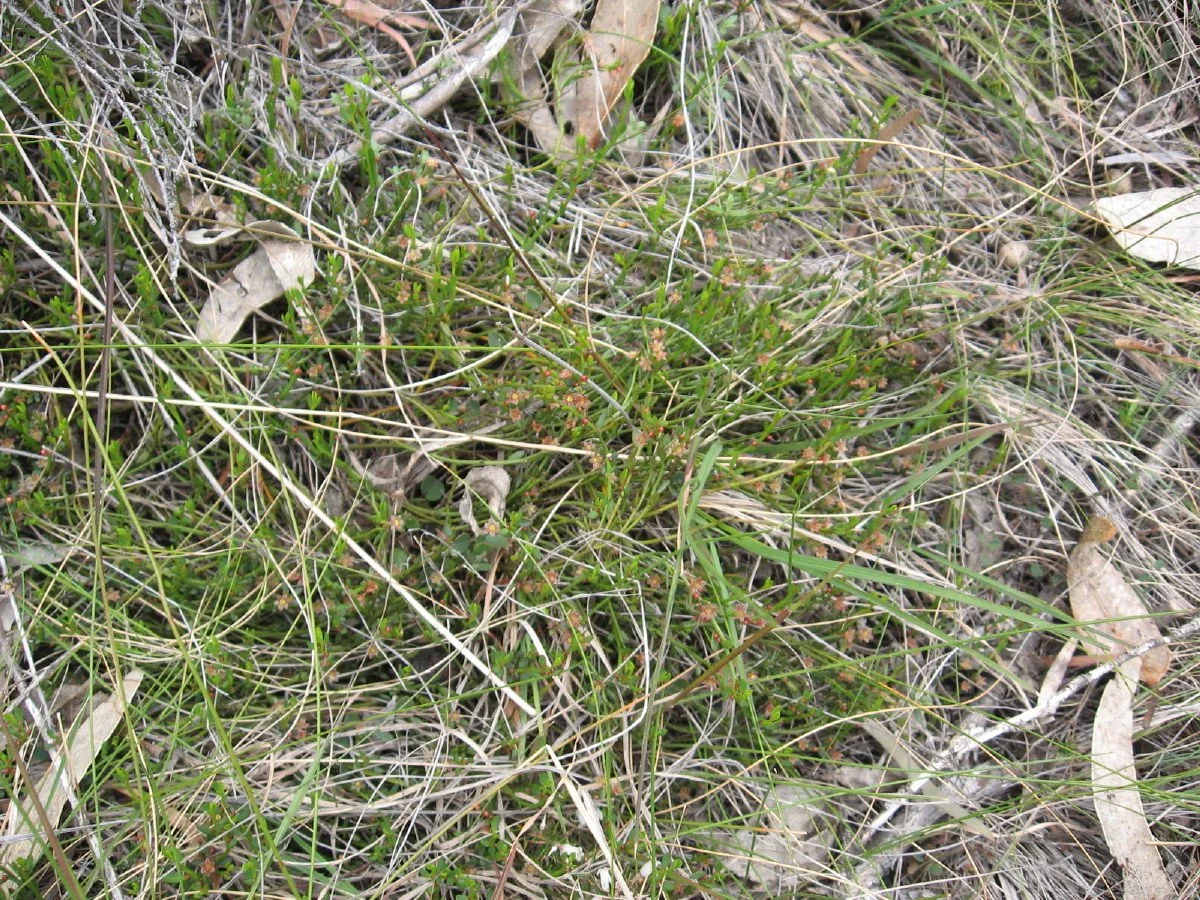

Phyllanthus australis
Common name "Austral Spurge", is a prostrate spreading shrub with tiny, six petalled, pink flowers in late spring. It has sparse, fleshy, green, spine tipped, oval shaped leaves. It was found amongst the grass on the western slope near the new summit loop track on Knocklofty Reserve.
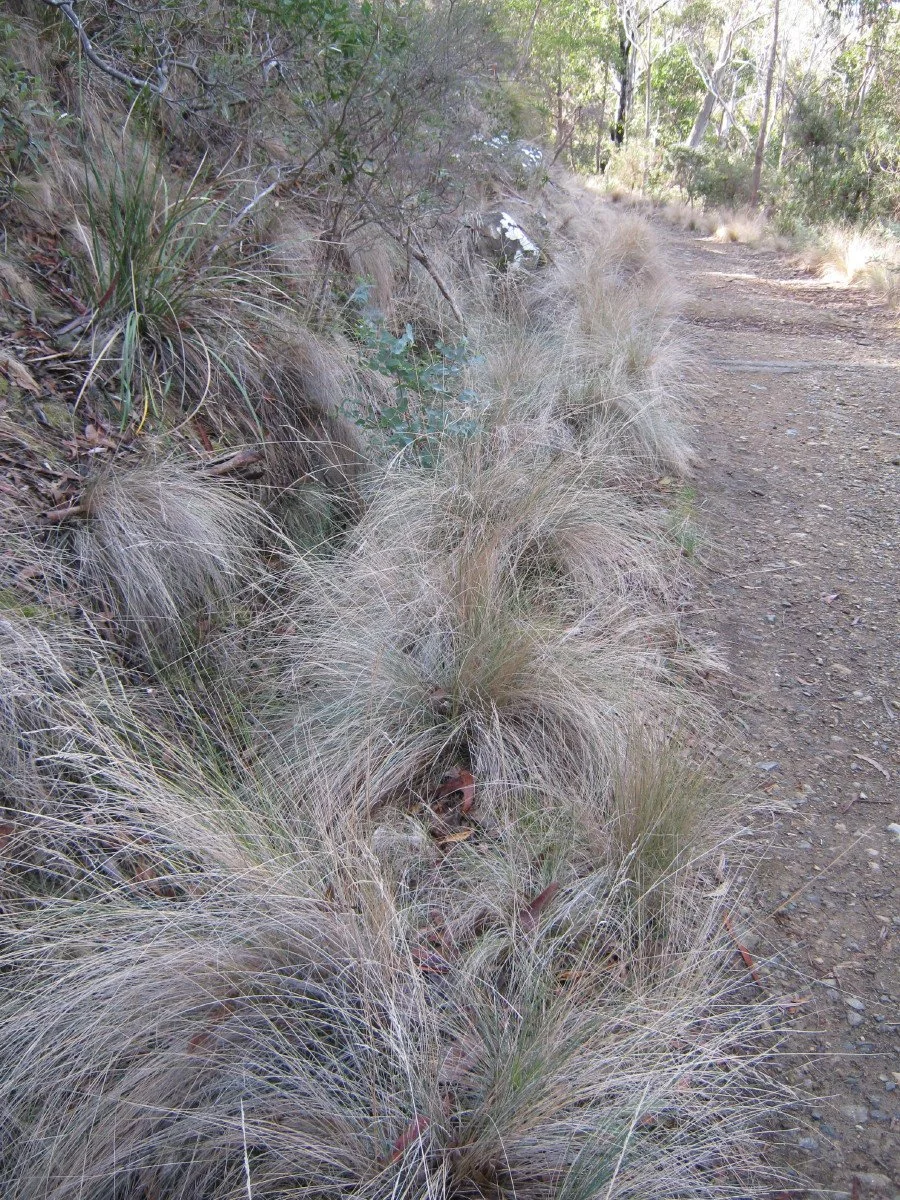

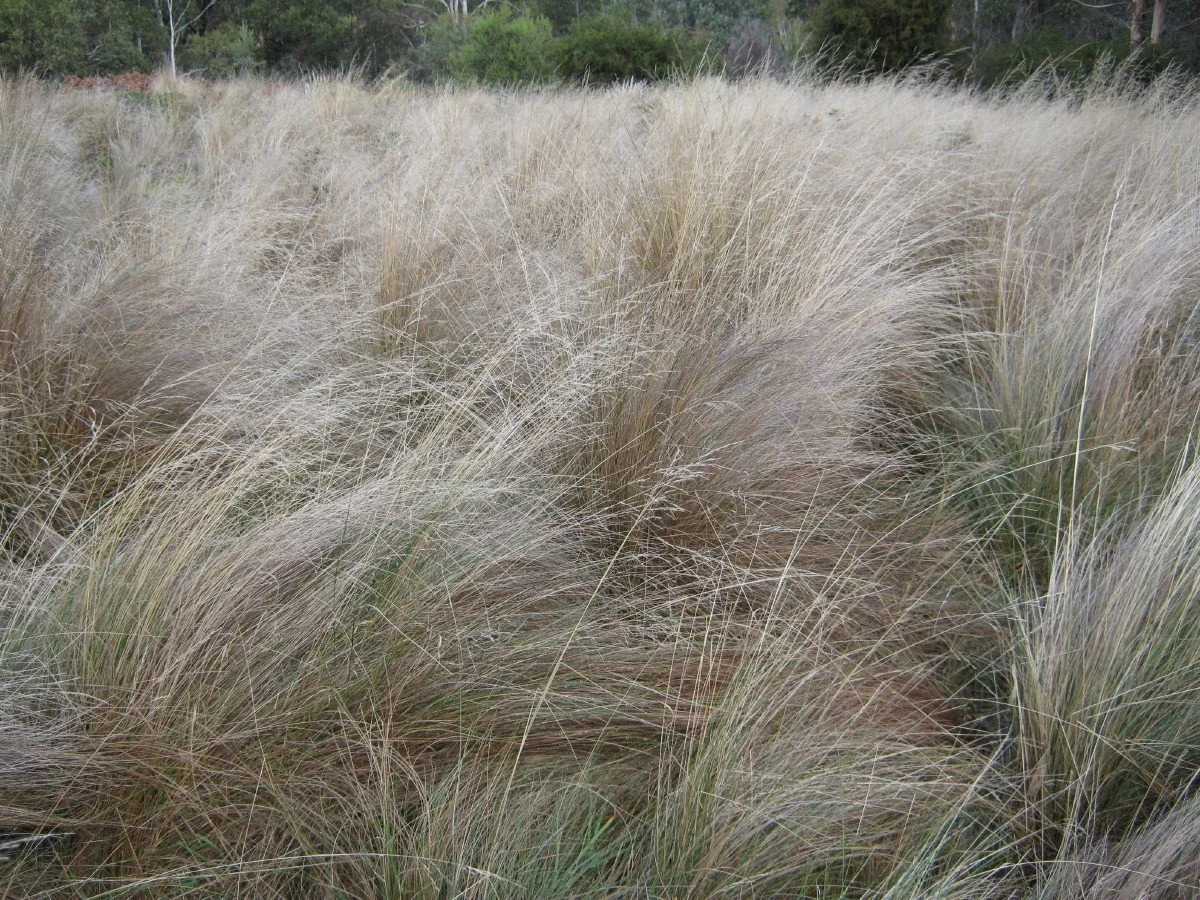
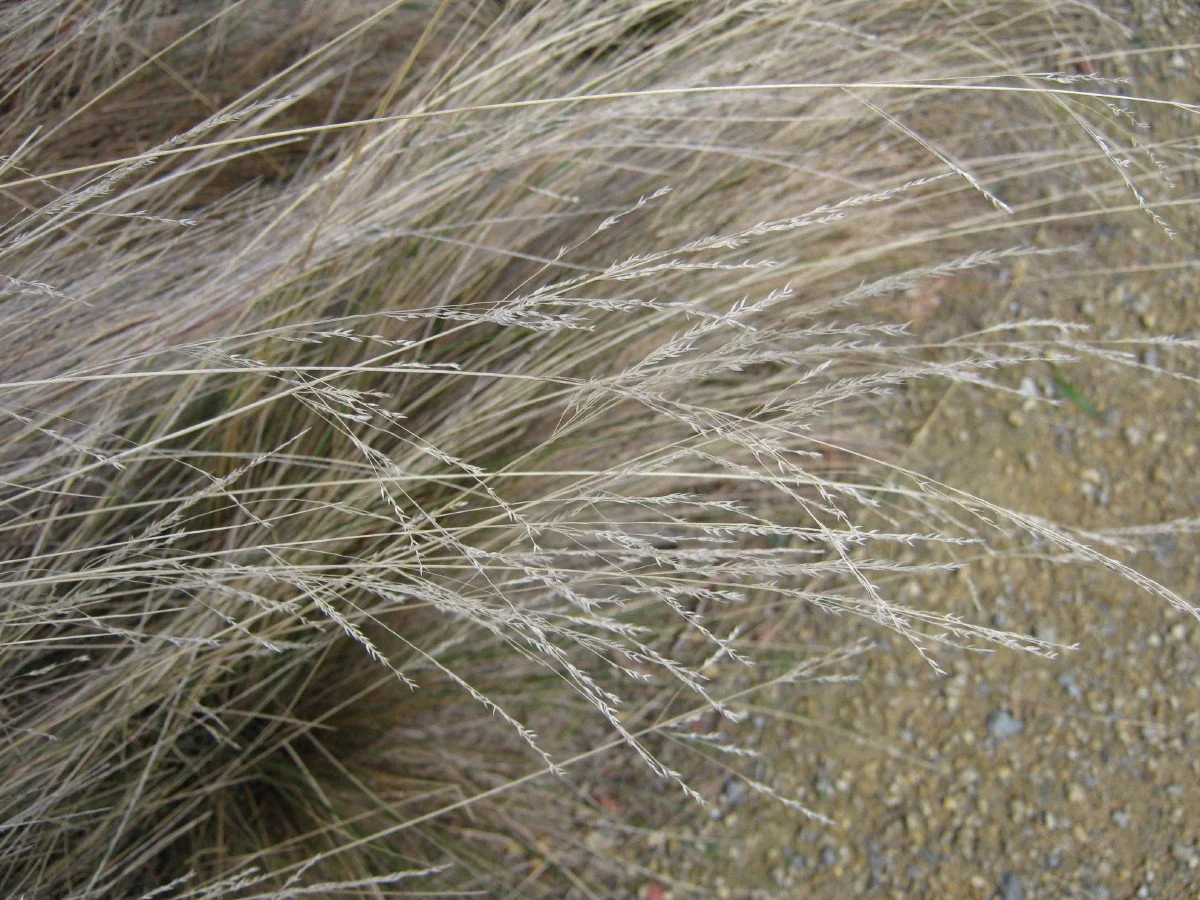
Poa labillardierei var labillardierei
Common name "Common tussock-grass", is one of the most wide spread grasses on the Knocklofty Reserve. It may be seen in the plantings around Janets Pond, especially on the southern side and along the Southern Trail uphill from the Aurora wayleave. The tussocks grow 0.5 to 1.3 m high by 0.5 to 1.5 m wide and in spring through summer plume like flower spikes to 1.3 m high present an excellent display. It is frost hardy and grows well in most soils, but is best with regular water. In the home garden these tussocks should be cut hard down to about 10cm in winter and dead material raked from the clump.
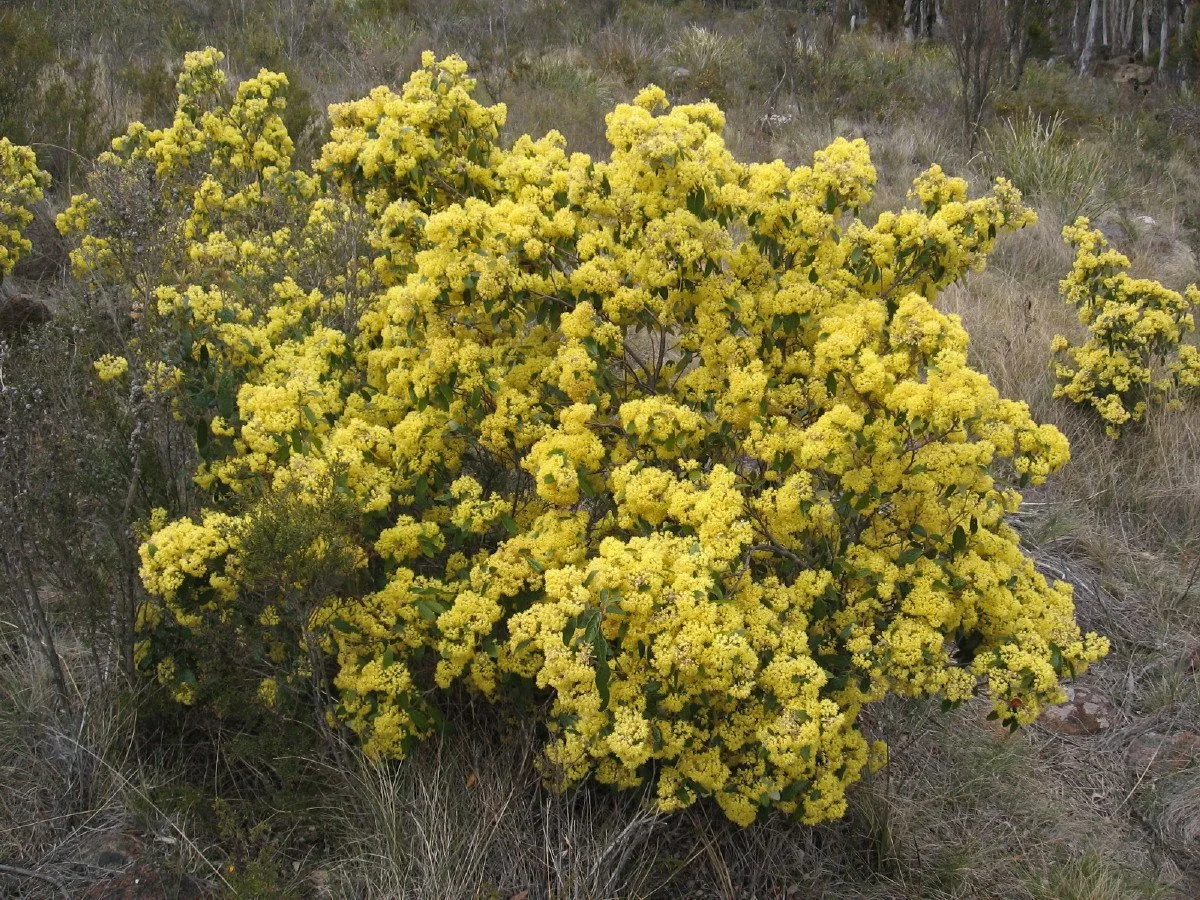
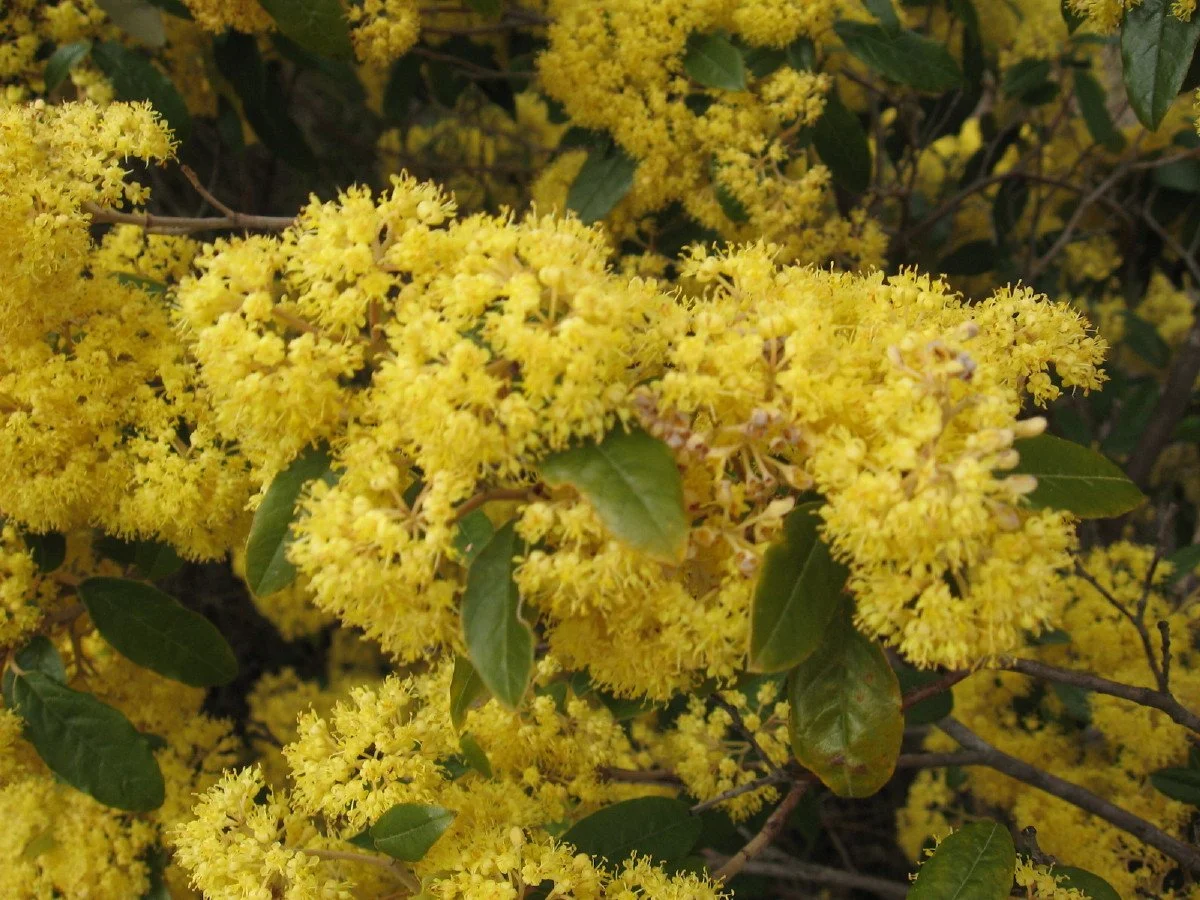
Pomaderris pilifera
Common name "Hairy dogwood", appears to have only limited distribution on the Aurora wayleave west of the summit and in the woods to the north on Knocklofty Reserve. It grows 2 to 4m high by 1.5 to 3m wide as a shrub to small tree, however rarely over 1.5m high on the Reserve. It has hairy, greyish young growth and dull green adult leaves with dense hairs beneath. The buds are also hairy and they open as cream to yellow five small petalled flowers in large bunches on the end of almost every stem in spring. In home gardens it is reported to prefer reasonably well drained acidic soils in part shade and should be pruned after flowering for shape and possibly better flowering.
Prasophyllum brevilabre
Common name "Short-lip leek orchid", has been found beside the Summit Loop Track east of the Allocasuarina grove. It has a long, 20 to 35cm, leaf and 8 to 32 flowers well-spaced up a slender stem. These green to brown with red markings flowers have a crystalline white labellum and white crinkled petals and appear in spring to summer.
Prasophyllum perangustum
Common name "Knocklofty leek orchid", is a very rare species, seldom found and last seen on Knocklofty summit in 2002. The 7 to 15, narrow green to light reddish green flowers with a white to pink labellum appear in late spring to early summer above the 18 to 25cm dark green leaf. This species is believed to only appear after a fire, yet a light burn since 2002 produced no flowers.
Pteridium esculentum
Common name "Bracken fern", is found all over Knocklofty Reserve, especially in the sandy heath areas and where there has been extensive clearing of the other indigenous flora and there is reasonable moisture in the soil. This species is very sensitive to extended dry periods, yet resprouts rapidly from dormant root stock after rain or fire. The 30 to 40cm long, bright green fronds rise 1 to 3m on slender, green to brown stems. The fronds may be two or three times pinnate.

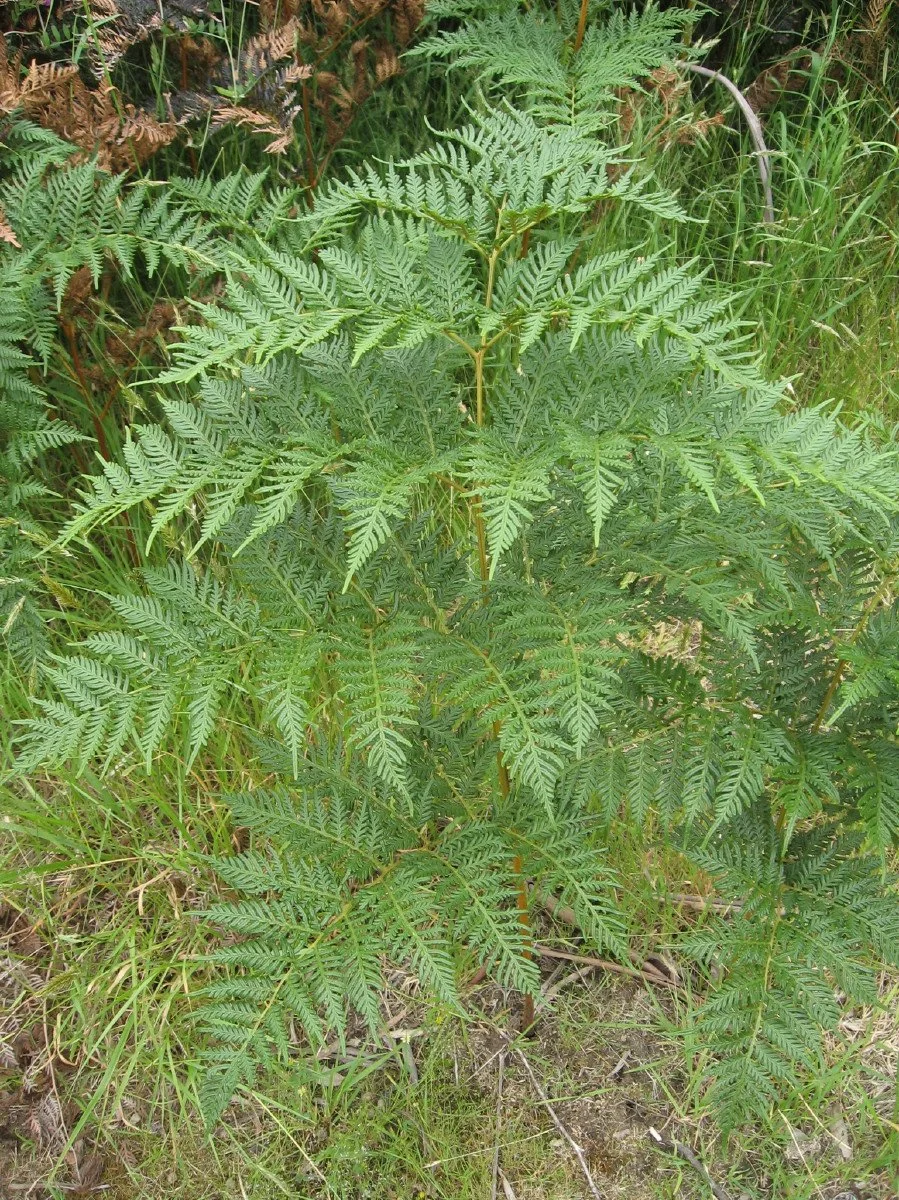
Pterostylis stenochila
Common name "Green-lip greenhood orchid", has been found in several locations sandy heath locations on Knocklofty Reserve; north of the Fielding Drive entrance and under the Eucalypts south east from the Forest Road carpark. The 1 to 7 flowers, transparent green with dark green stripes and a shiny green labellum appear in winter through early spring on a 12 to 30cm tall stem that has 5 or 6, 15 to 50mm long leaves. This orchid can be confused with Pterostylis melagramma but P. stenochila seems to prefer drier sunnier locations.
Pultenaea daphnoides
Common name "Heartleaf bushpea", is a medium, woody shrub growing 1 to 2.5m high by 1 to 2m wide with golden yellow, pea flowers in spring. It prefers moist, well drained soils in part to full sun, and is frost tolerant. It can be found in dry and coastal locations and on Knocklofty Reserve particularly in the woodlands on the southern side of the summit. In home gardens it can be pruned to shape after flowering.
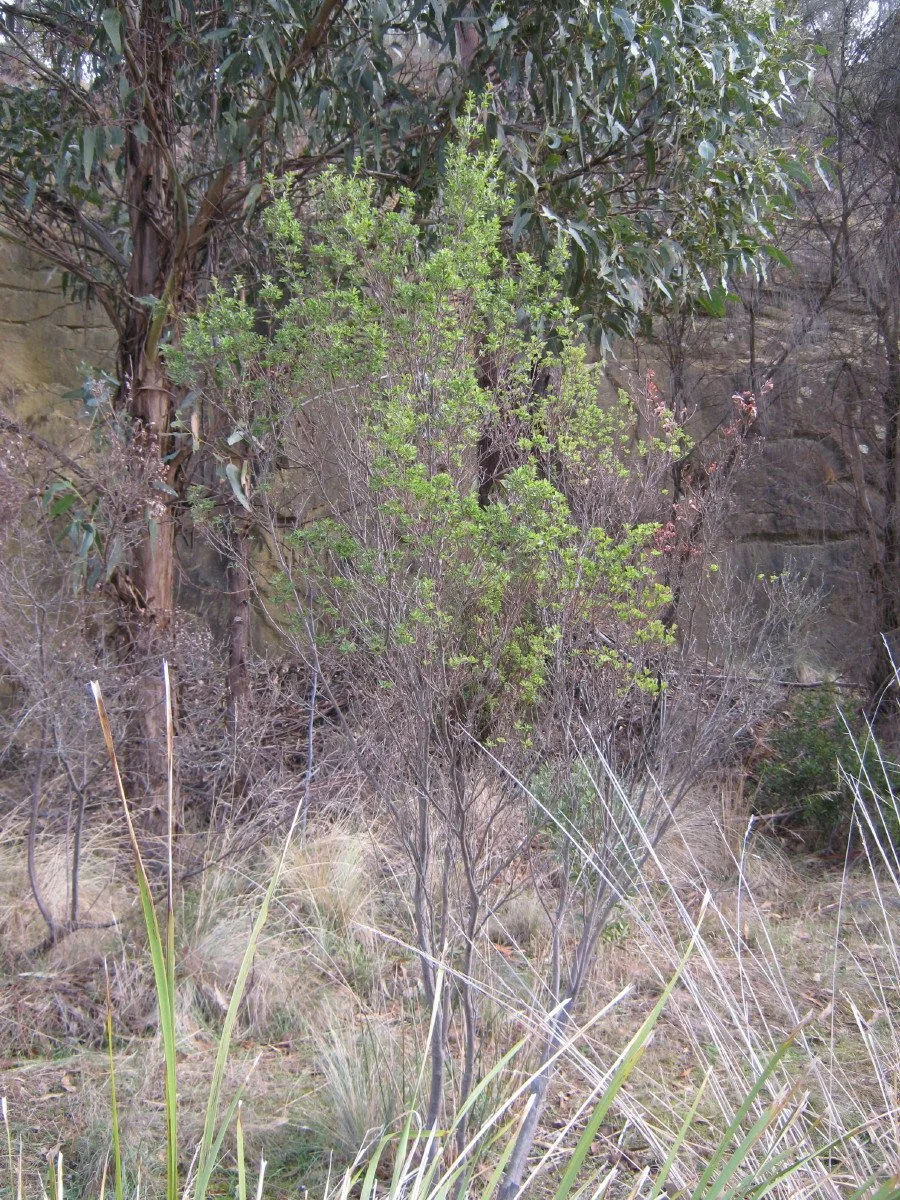
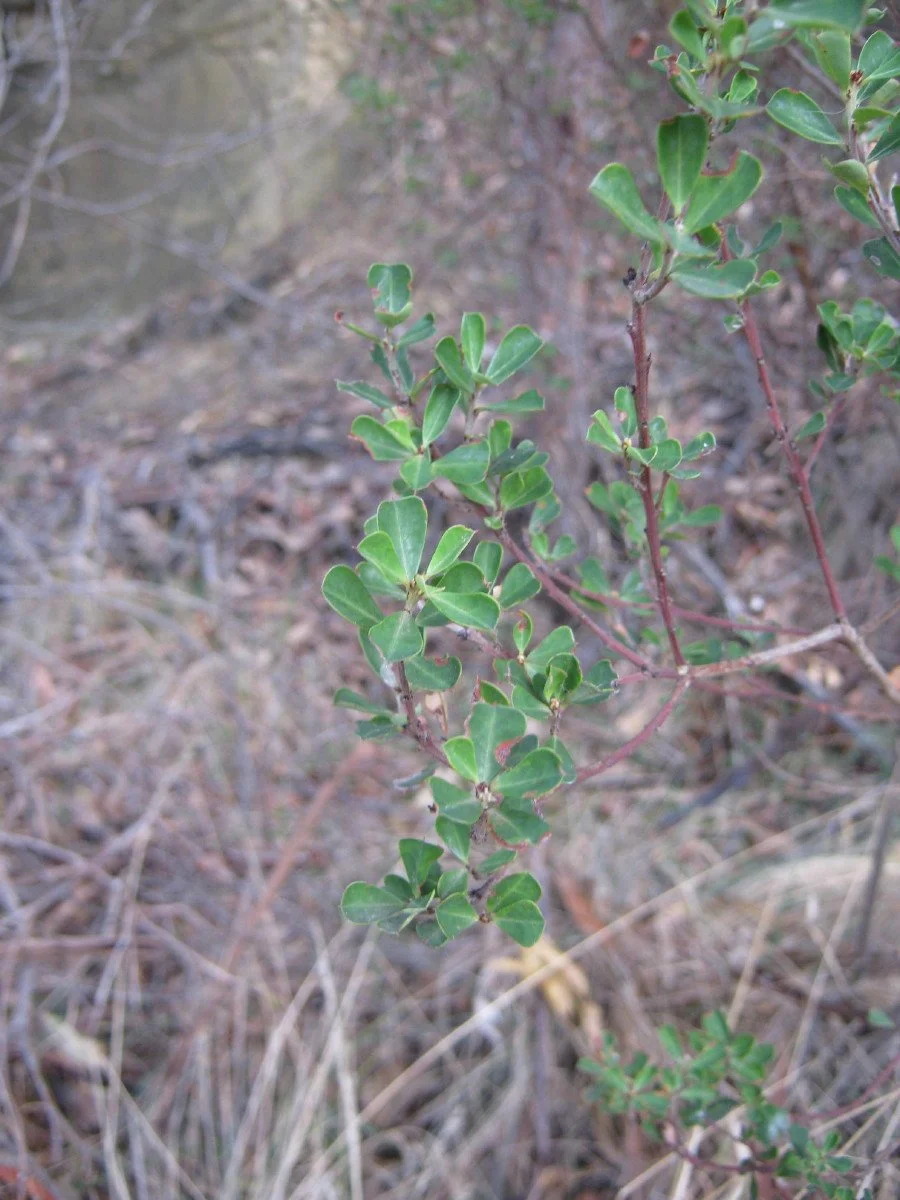
Pultenaea juniperina
Common name "Prickly Beauty", is a medium, prickly shrub, growing 0.5 to 2.5m high by 1 to 2m wide that forms compact or open thickets by suckering from its roots. The yellow pea flowers appear singly or in clusters on the ends of branches or side stems in spring through summer and occasionally at other times. It is wide spread in the Knocklofty Reserve and an excellent example of it suckering may be seen on the lower Hobart side of the Bandicoot Corridor where a few specimens were planted and have formed nice thickets for birds to hide in. It can be used to advantage as a hedging plant in public and home gardens if regularly pruned and grows in most soils in part to full sun.
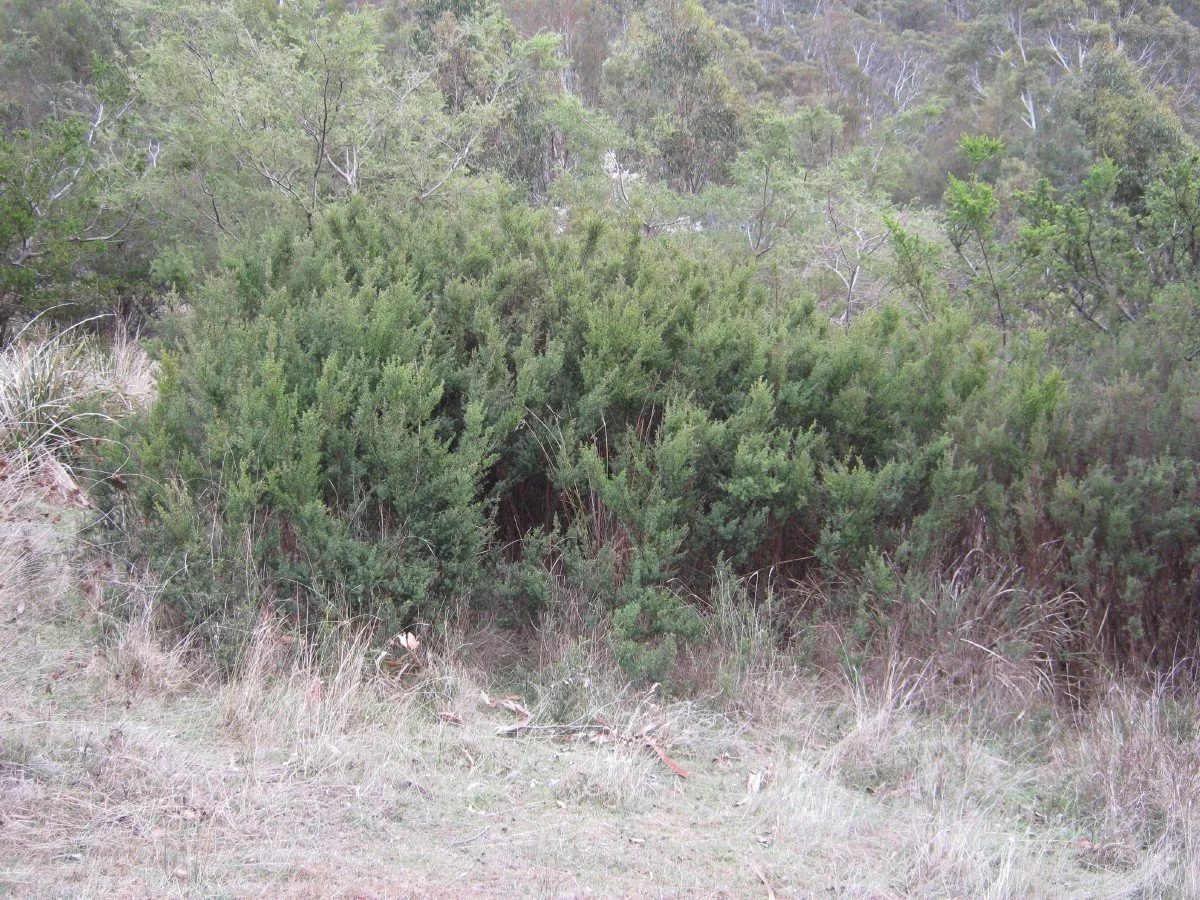
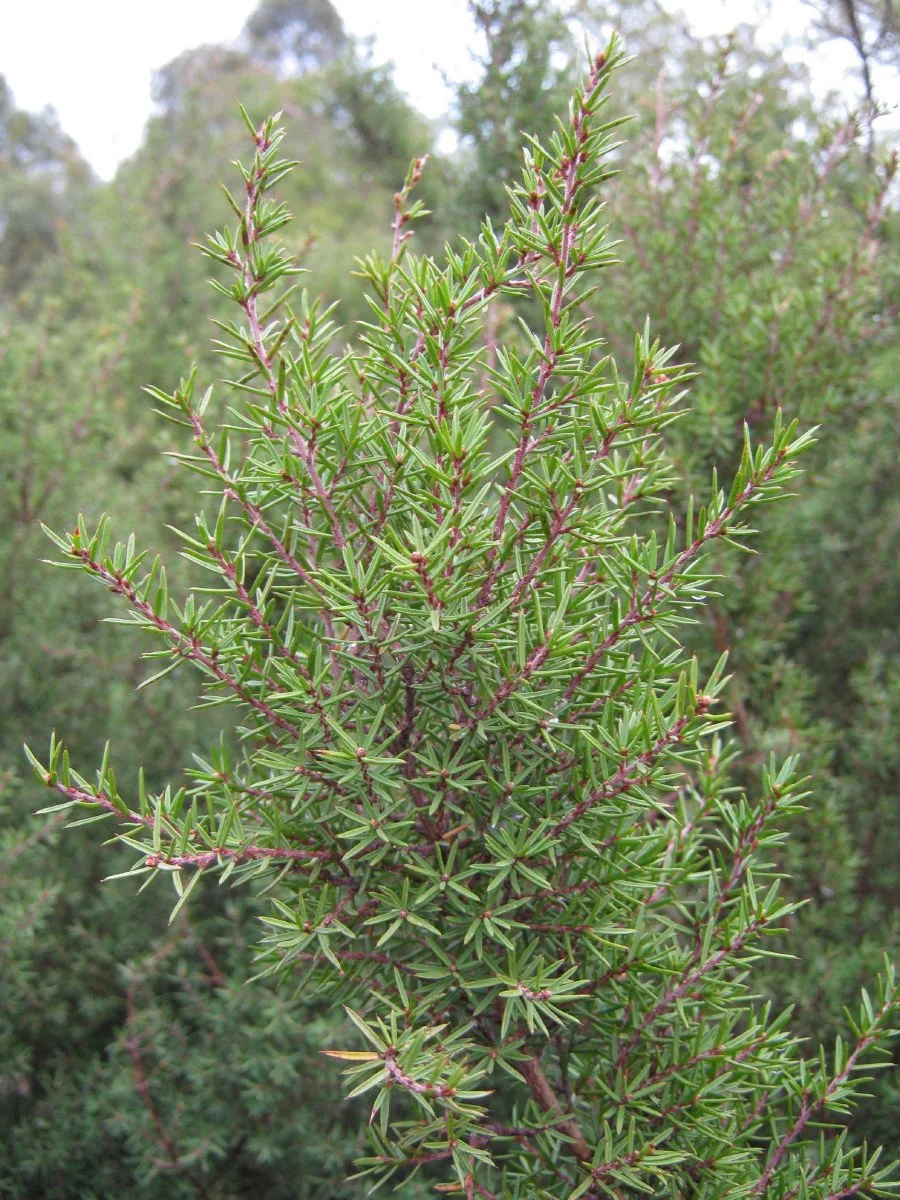
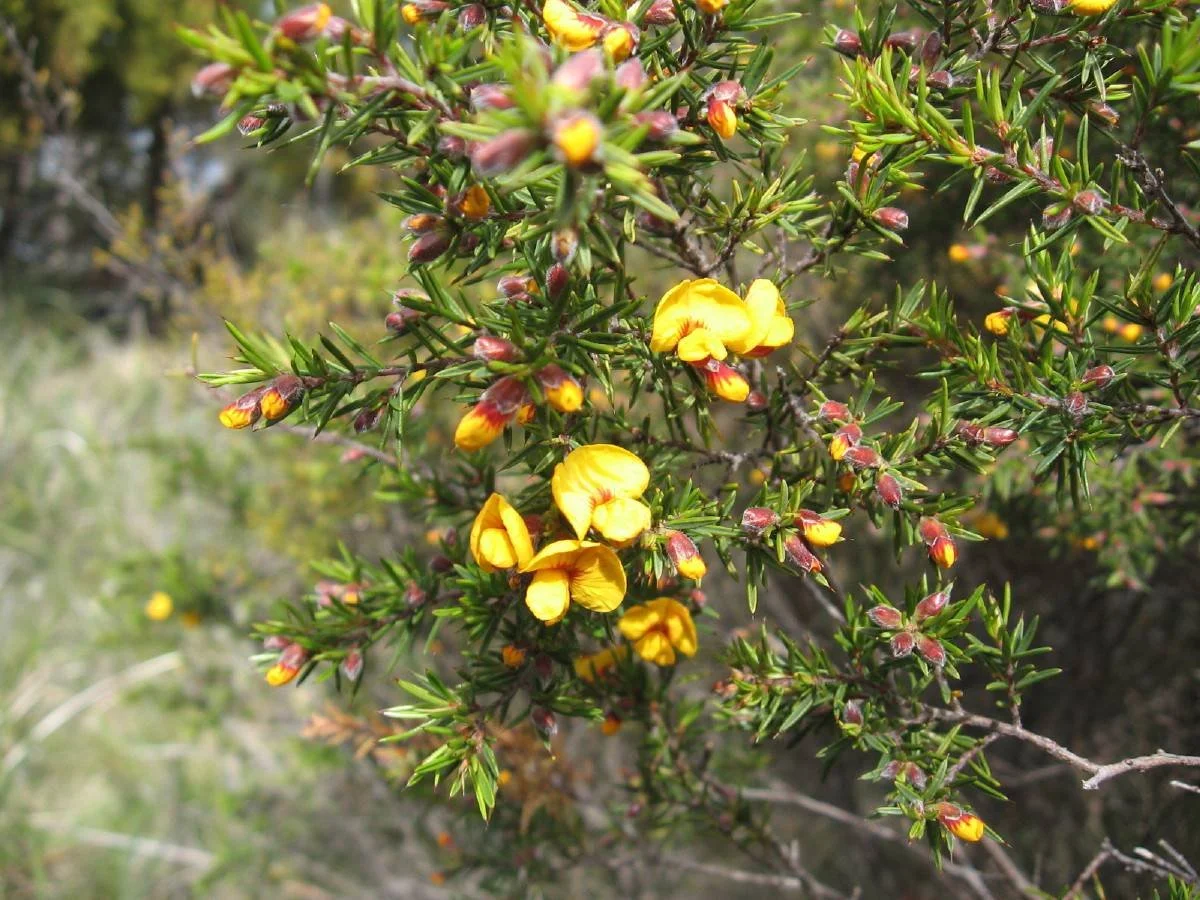
Pultenaea pedunculata
Common name "Matted bushpea", grows along the side of the Summit Loop Track, up the hill from the Allocasuarina grove, near the Bandicoot corridor along the top side of the fire trail through to Mt Stuart and along the top side of the Sandy Spit Trail on Knocklofty Reserve among other places. This prostrate plant grows from 5 to 15cm high by 1 by 2m wide with yellow-orange flowers in spring. In home gardens, it prefers moist, well drained and mulched soils and is best in full sun as a prostrate rockery plant where tip pruning creates thicker matting.





